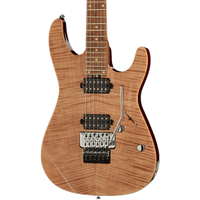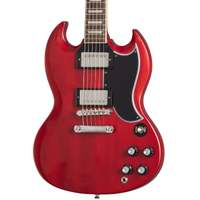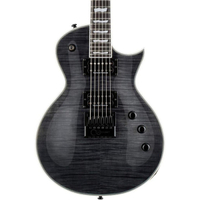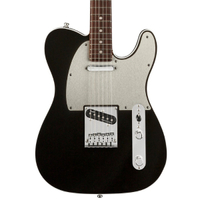
1. The quick list
2. Best Strat
3. Best Les Paul
4. Best Tele
5. Best hollowbody
6. Best offset
7. Best budget
8. Best for beginners
9. Best under $1,000
10. Best for small hands
11. Best semi-hollow
12. Best for professionals
13. Best for metal
14. Also tested
15. Buying advice
16. How we test
To be totally honest, it’s nigh on impossible to select the best electric guitar. Guitars come in such a variety of styles and configurations that finding a single instrument in such a crowded marketplace is just not possible. So instead of trying to pin down a single instrument as the ‘best’, instead we’ve opted to separate our top picks into various categories that will suit the needs of a wide variety of players.
Having reviewed countless electric guitars over the last few decades, at MusicRadar we’re well-placed to pick out the best guitar for a particular job, whether you’re a beginner or a touring professional. We’ve put all of our review guitars through their paces at home, in the rehearsal room, and even played them live to ascertain if they’re up to the rough and tumble of the average musician’s life and if a guitar doesn’t perform for its intended purpose, it simply doesn’t make the cut.
With so many choices available to guitarists in 2024, it can certainly be a lengthy process to single out a guitar for your needs so to make things easier for you, we’ve put together a lengthy buying advice section with loads of common questions answered by the expert team here. If you just want to see the best electric guitars you can buy right now, then keep scrolling for our top picks.
The quick list
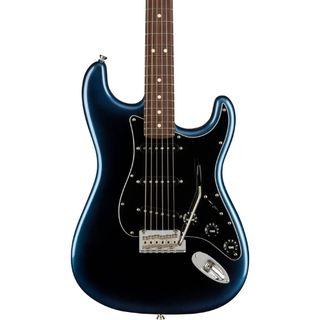
There are loads of different Strat's to pick from, but for us, the Fender American Pro II Stratocaster perfectly straddles the line between tradition and modernity.
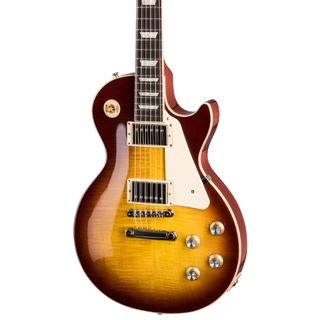
If you're all about the traditional LP experience then the Gibson Les Paul Standard 60s sets the, err, standard. Classic LP tone with modern playability, this guitar is simply joyous to play.

Packed with premium appointments like a rolled fingerboard and locking tuners, yet reasonably priced, the Fender Player Plus Telecaster can cover a lot of sonic ground.
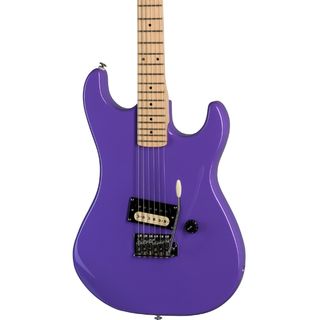
If you're after a great instrument that doesn't cost the earth, the Kramer Baretta Special is a hell of a lot of guitar for comparatively little money. Ideal for rock and metal.
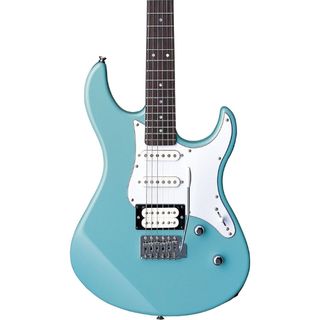
If you're a beginner looking for your first guitar, the Yamaha Pacifica 112V is a fantastic choice. With great pickups and excellent playability, it will last well past those first few chords.
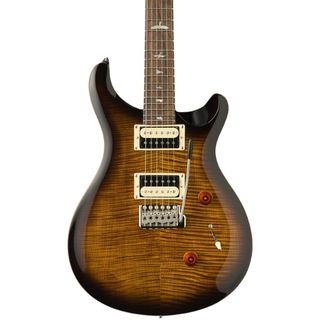
Want to move up from a lower-level instrument? The PRS SE Custom 24 provides loads of pro-level features and exceptional sound at a price that sits well below the $1,000 mark.
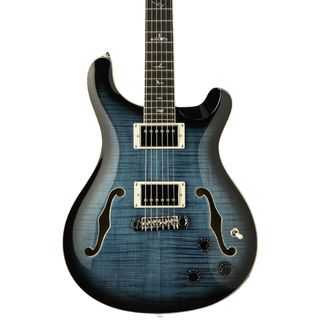
Mixing stunning looks with an incredibly versatile tonal palette, the PRS SE Hollowbody II Piezo is a classy instrument with impeccable build quality.
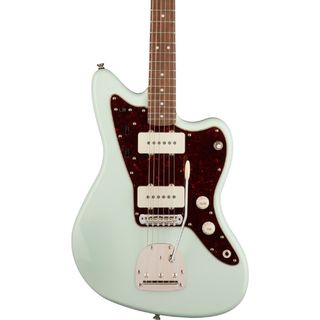
If you're after something different from your usual Stratocaster or Les Paul-style guitars, the Squier Classic Vibe 60s Jazzmaster has a unique voice all of its own.
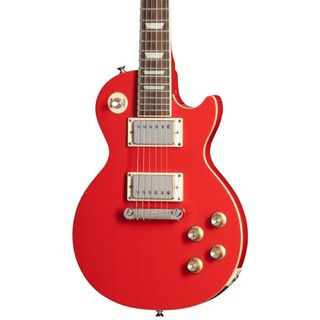
If you're buying for a younger player or you just have small hands, this shrunk-down Epiphone Power Players Les Paul delivers great sound with slinky playability and a light weight.
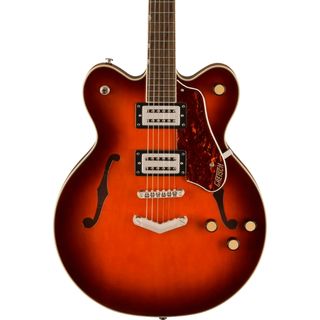
The Gretsch G2622 Streamliner offers that hollow body tone in a smaller and less feedback-prone package. Combining the best of solid and hollow bodies, it's fantastic value for money too.
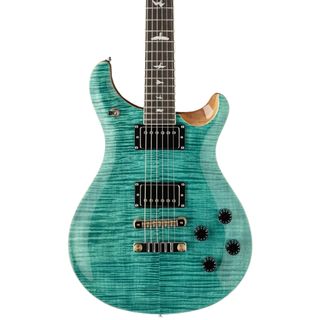
Looking for a top-level, professional electric guitar? The PRS McCarty is a premium offering that delivers versatility, playability, top-tier tone, and stunning good looks.
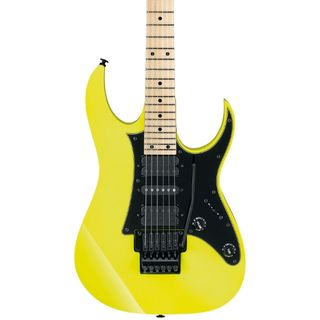
The original super shred machine, the Ibanez RG550 has a ridiculously thin neck for fast playability and two powerful humbuckers for optimal metal guitar tones.
Best Strat
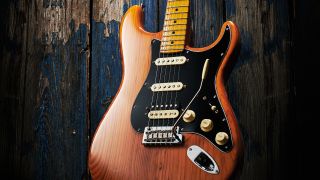
There are a lot of different options to pick from when it comes to Stratocaster guitars, but for us, the Fender American Professional II Stratocaster is undoubtedly one of the best. It’s got all the aura of an iconic Strat but adds some fantastic player-centric features that make it stand out from the pack.
This guitar will cover a huge amount of sonic ground thanks to the resonant body and trio of pickups. All of those classic Strat tones are available and we particularly loved the neck pickup on this model, which delivers a huge low-end that sounds phenomenal on the lower strings. It's also available in a HSS model if you want some extra oomph.
There’s an onboard treble bleed circuit so you can retain your high end when you roll off the volume knob and a push-push switch that gives you access to the tasty bridge and neck pickup combination. Add in a rolled fingerboard and deep ‘C’ neck profile, and you have an absolute tone monster of a guitar that’s a joy to play.
Read our full Fender American Professional II Stratocaster review
Best Les Paul
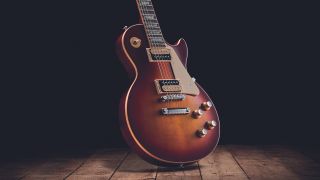
If you want the traditional LP experience with none of this newfangled weight relief then the Gibson Les Paul Standard 60s is just the ticket. Packed with the mojo of a classic Les Paul, this guitar is a return to form for Gibson after their troubled time messing with their vintage guitars.
The sound of the pickups is absolutely phenomenal, roaring when paired with a tube amp, letting you know just why the LP remains so popular. There’s a lot of variety in the different combinations of pickup and tone pots, and whether you like classic rock, hard rock, or blues, you’ll be able to dial in the perfect sound.
The neck is one of the highlights of the Standard 60s and it comes set up with a nice, low action. The Slim Taper feels relatively flat, with a ‘D’ profile that makes playing feel absolutely rapid. Hand-wired electronics with orange drop capacitors keep things period-correct, and overall it’s just a joy to play.
Read our full Gibson Les Paul Standard 60s review
Best Tele
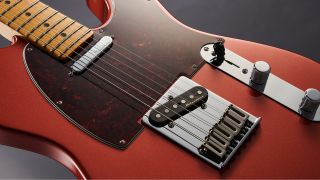
The Fender Player Plus Telecaster is a fantastic instrument considering the cost, giving you features you’d normally find on instruments much higher up the big F’s ziggurat. As the owner of a Player Plus Tele, we can tell you firsthand that it’s a phenomenal instrument that can cover a lot of ground.
Two of Fender’s noiseless Tele pickups ensure amazing hum-free performance, and this guitar has all of that Tele spank in the bridge position with the thick, dark sound of the neck pickup. It’s got an ace up its sleeve too, pull up the tone knob and you get both pickups in series, giving you a thicker, humbucker-esque sound to add to an already versatile palette.
The neck feels phenomenal with Fender’s trademark ‘C’ profile and medium jumbo frets occupying a perfect middle ground for pretty much any style. It’s a joy to play thanks to the rolled edges of the fretboard and a set of Fender locking tuners that keep it perfectly in tune no matter how hard you play. The Player Plus Tele is a brilliant instrument for any kind of guitarist.
Read the full Fender Player Plus Telecaster review
Best budget

It’s an incredibly simple setup, but the Kramer Baretta Special has been a sleeper hit just because it’s a rock-riffing machine and isn’t ashamed of it. Sometimes it’s nice not to worry about treble bleed circuits or fancy switching systems and just plug in and play. Add in the ridiculously low cost and you’ll soon see why this guitar is so popular.
The single humbucker pickup configuration is simple but delivers a raw and raunchy rock tone with a surprising amount of depth. It’s hot enough to do classic metal guitar tones with loads of presence that begs you for lead work with tapping and pinch harmonics, but it’s pretty good at clean sounds too, thanks to the Mahogany body.
The neck is slim and super fast playing as you’d expect from a guitar with this look, and it comes with a non-locking tremolo to add some pizazz to your playing. Whilst you won’t be able to do crazy dive bombs with the tremolo, the hardware holds its own when it comes to tuning stability and regular playing.
Best for beginners
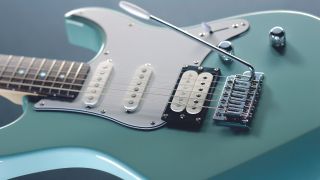
The Yamaha Pacifica has long proved a benchmark for quality and specification, and the 112V remains a top guitar for beginners. The 112 is far from fancy and simply concentrates on the bare necessities. Yet the construction is of excellent quality. Trust us, if looked after this will be a guitar for life.
By design, it's an altogether more modern, brighter, and lighter take on a hot-rod Strat. But when we say brighter that doesn't mean overly shrill. In fact, the bridge humbucker will surprise some, it's beefy without being too mid-range heavy, and although the coil-split proves a little bland played clean, with a distortion boost it's a pretty useful gnarly and wiry rhythm voice.
It's good to have the choice too when mixed with the middle pickup - switching between the full and split coil here is subtle but, especially with cleaner 'class A' amp voicings, there's enough character difference to be useable. The solo single-coils impress - plenty of percussion and with a little mid-range beef added from the amp these get you to the correct Texas toneland. The neck and middle combined produce a fine modern Strat-like mix - the added brightness will cut through a multi-effects patch nicely.
Read our full Yamaha Pacifica 112V review
Best under $1,000
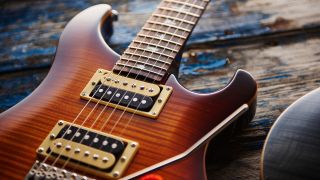
The PRS SE range has offered solid, well-built, great-sounding guitars for years now, and the PRS SE Custom 24 2018 is a perfect example. This Korean-built mass of maple, mahogany and rosewood is a classy-looking guitar. It’s a wonderful instrument to play too - PRS's expertise making eye-wateringly expensive guitars is evident from the moment you pick it up.
The bridge, for example, has a noticeably low profile. This makes palm-muting a much more pleasant experience, especially if you’re used to chugging away on a Floyd Rose-style bridge.
A lot has been made of the SE Custom’s pickups; 2017 models added Korean-made versions of the 85/15 pups used on the more expensive American Core line, dubbed “the perfect pickup” by Paul Reed Smith himself. Largely, they live up to that promise; the bridge pickup is capable of some serious chunky metal tones, which retain definition and clarity even at absurd levels of gain.
Spend some time with the SE Custom 24 and you’ll come to realise that there is no stereotype that fits. And therein lies its beauty. It’s not a guitar or a brand that concerns itself with cultivating a popular image; PRS has always favoured more obvious metrics like quality manufacturing, great sounds and classic looks.
Read our full PRS SE Custom 24 review
Best hollowbody
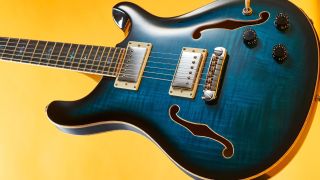
Now, on the whole, hollowbody guitars can look a little bit outdated. We’ve all seen the super deep Jazz-boxes with floating neck pickups, and, especially if you want to explore the gain channels on your amp, these won’t do. It’s with great pleasure then, that PRS released the SE Hollowbody II Piezo - which can cover the last seven decades’ worth of tones while keeping up with the aesthetic of today’s most popular guitars.
The SE Hollowbody II Piezo combines the natural, rich tone of magnetic pickups with the crisp, acoustic-like punch of a piezo, to provide the player with a vast tonal palette. The piezo is co-designed by PRS and LR Baggs and provides some thoroughly authentic acoustic guitar tones, and the pair of 58/15 S humbuckers take care of the rest. The humbuckers deliver a rich, warm tone which - when combined with the hollow construction of the guitar - can put this SE into the jazz, blues, or rock wheelhouse - depending on the mood.
For those who just want one pickup type or the other, there’s no need to worry. This SE has two outputs - one for the piezo, and the other for the magnetic pickups. If you’re feeling creative, send them to two separate guitar amps or down two different signal paths. Yeah - it’s potentially a wildcard - but the versatility is totally unmatched at this price point.
Read the full PRS SE Hollowbody II Piezo review
Best offset
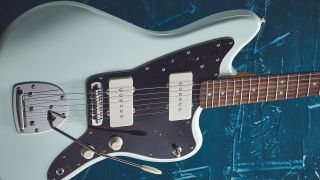
With its combination of fantastic value for money, stunning looks, and unique tone, the Squier Classic Vibe 60s Jazzmaster is a brilliant offset guitar. Although offsets are primarily used in alternative rock and shoegaze, they’re actually far more versatile than their reputation suggests.
With two Fender-designed single coil pickups, all that jangly guitar tone the Jazzmaster is renowned for is present here. It’s a characterful sound that’s a little thicker than a Strat or a Tele, whilst retaining more clarity than your average humbucker on an LP. When you use the knobs and switches properly, you can dial in some amazing tones with this guitar.
Of course, the single coils are noisy and so are the tremolo and bridge combo, but for us, that’s part of the charm of an offset. The movement of strings below the bridge adds to the overall sound, giving this Jazzmaster a totally different feel from any other guitar you’ll play.
Best for small hands
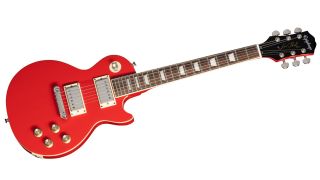
Taking one of the most iconic and weighty guitars of all time and shrinking it to a more manageable size, the Epiphone Power Players Les Paul is ideal for guitarists with smaller hands, or younger players who want to get to grips with electric guitar.
It’s packing two ceramic humbuckers that deliver a surprisingly large sound considering the small size of the guitar. While they won’t trouble larger and more expensive Epiphone models, there’s an excellent balance of low-end heft and top-end sparkle. As you’d hope from an LP-style guitar, there’s plenty of mid-range punch to its tones, and it will inspire any rock guitar lovers.
The neck is super comfortable thanks to the 3/4 size, and for a fully-grown guitar player, it didn’t feel that cramped. It might need a little setup out of the box as the action wasn’t the lowest (albeit far from unplayable) and we were very impressed with the tidy fretwork too. For a younger player who wants to rock out, this is the perfect electric guitar.
Read our full Epiphone Power Players Les Paul
Best semi-hollow
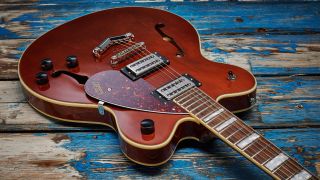
The Streamliner concept is simple: to create more affordable Gretsch guitars without losing their specific DNA. Two new Broad'Tron humbuckers are controlled in classic Gretsch style by a three-way toggle selector switch on the bass side shoulder, a master volume on the treble side horn, and then a trio of controls by the treble-side f-hole for individual-pickup volume and master tone.
The G2622's construction gives a different response and resonance to other new releases from Gretsch and, with these pickups, moves further from the Gretsch sound. And while its construction gives it a more solid, or at least ES-335, character, it's a little more airy and less punchy with a softer, squashier tonality.
The beefier pickups certainly don't nail a classic Gretsch tonality - although if that's what you want, the full-size pickups are easy to replace - but they do broaden the sonic potential, especially for more gained styles, while staying close to the classic iconography. If you want a great-value semi-hollow guitar, this is among the best for under $500.
Read our full Gretsch G2622 Streamliner review
Best for professionals

The McCarty Model - named after Theodore 'Ted' McCarty, Gibson's president during its 1950s to 1960s heyday and, much later, 'mentor' to Paul Reed Smith - originally appeared in the early 1990s and was the company's first attempt at a more vintage-informed guitar. It takes its name, primarily, from its scale length of 24.594 inches. However, the focus of the 594 is not just that scale length but a desire to recreate, as closely as possible, the 'holy grail' of vintage Gibson tone - a 1959 Sunburst, but in a modern double-cut guitar.
A change comes, to our ears, with the pickups, which are PRS's latest date-series 58/15 humbuckers but with an 'LT' (Low Turns) suffix, which on a meter shows the bridge unit to have a lower DC resistance than the standard McCarty's 58/15, although the neck pickup seems virtually identical. The four-control layout (the first PRS double-cut guitar to use it) possesses the classic LP setup and feels immediately comfortable to any player used to the much-copied Gibson layout.
Full humbucking, or with the partial coil splits engaged, full volume, half volume, tones rolled off - not to mention the shades with both pickups on - there's not a duff sound that we can find. Dynamic, expressive - it purrs, it roars, it's one of the best high-end electric guitars.
Read our full PRS McCarty 594 review
Best for metal

Introduced in 1987 and discontinued in 1994, the Ibanez RG550 remains the childhood sweetheart of many players. Designed as a mass-appeal version of Steve Vai’s famous JEM777 model, it had character in abundance. For this reboot, Ibanez has skilfully managed to extract the very essence of what was so popular about the original RG550 and piece it back together in a way that enhances its legacy.
The Japanese-made 2018 vintage is, essentially, a masterclass in everything that is good about shred and metal guitars. The neck feels lithe - our hand glided pretty effortlessly, rather than simply moving - while the Edge vibrato is rock-solid and the overall craftsmanship is exemplary. Tonally, the RG550 covers a lot of bases. It always did, despite its pointy appearance, meaning you could comfortably stray into all kinds of genres without too much fuss.
The US-designed V7 bridge humbucker delivers the razor-sharp riff platform you’d hope it would, while the V8 neck ’pup offers a hint of compression at higher gain settings, which levels lead lines nicely. It is, in the best way possible, everything you remembered from the original, and that makes it one of the best shred guitars available today.
Read our full Ibanez RG550 review
Also tested
For us, the above guitars are what you should be going for depending on your use case. That said, if you didn't find what you were looking for, we've reviewed plenty more great guitars, a selection of which you can find here.
Buying advice
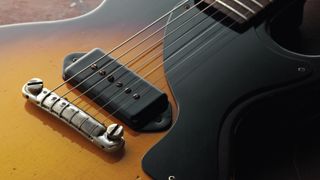
When was the electric guitar invented?
Like all great inventions, the electric guitar was born from a desire to fix a problem - that problem being the lack of volume from an acoustic guitar. Although the timeline is a little murky, most historians agree that the first-ever electric guitar made its debut in the hands of Charlie Christian in 1936. The prominent jazz musician needed his acoustic guitar to be louder so his guitar solos could be heard over the band. He would go on to add what we now think of as a pickup to the body of his guitar, and voila - the electric guitar was born.
What about the solid-body electric guitar? Well, there are many different accounts out there about who invented the first-ever solid-body electric guitar. Was it Rickenbacker's Frying Pan lap steel or Les Paul’s log? The truth is, no one really knows who came up with the concept, but what we can all agree on is the first mass-produced electric guitar - as we know it today - was the Fender Esquire and Broadcaster in 1950.
What’s quite remarkable is, the Broadcaster hasn’t changed that much since it was released at the start of the fifties. Okay, it did get a rebrand in 1952, after Gretsch pointed out they had a drum kit by the same name. However, the basics that made the guitar so revolutionary are still present today. Of course, this goes for all the guitars of America’s golden age; the Stratocaster, Jazzmaster, and ES-335 are all practically unchanged 70 years on.
Do electric guitar body shapes matter?
Whilst the electric guitar's body shape has little effect on the sound of the instrument, it certainly plays a part in the way it feels. There are two main types of guitar body shapes, single cut and double cut. A single cut is what you get with a Telecaster or a Les Paul, whilst a double cut is your typical Stratocaster or SG-style guitar.
A modern guitar body will typically have 'cuts' that make it more comfortable, usually on the back of the body, the so-called 'belly cut' or 'rib cut' and one when your arm rests, which allows for a more comfortable position when picking.
Vintage guitars on the other hand usually eschew these for period correctness, resulting in a guitar with sharper edges. If comfort is at the forefront of your list for a new guitar, then definitely bear this in mind when you purchase.
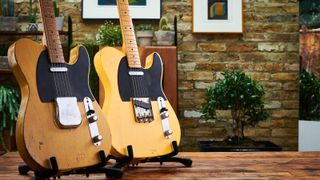
What do I need to know about guitar hardware?
The hardware on an electric guitar is more important than some players think, and it pays to ensure your new guitar has the best hardware you can afford. When we talk about hardware, we, of course, are referring to the bridge, machine heads, nut, and strap buttons
While at the beginner end of the spectrum, the hardware is serviceable and works perfectly fine for the most part. The more we increase the budget, the better the quality gets. For example, you may find a basic set of machine heads on an entry-level guitar. Whereas, on a high-end instrument, you are likely to find a set of locking machine heads that have a higher gear ratio and aid in string slippage, ultimately resulting in more stable tuning.
How do electric guitar pickups work?
Electric guitar pickups are the main tonal generators of the electric guitar and come in many different shapes and sizes. The two most common are the single coil and humbucker. Single coil pickups are generally brighter, more dynamic, and perfect for clean sounds - although if you asked Hendrix, he would’ve told you they can rock as well.
There is a downside to the humble single coil, though, and that’s noise. Single coils suffer from a problem called 60-cycle hum, and it can be rather irritating, especially at high volumes or excess gain.
Humbuckers, on the other hand, as the name suggests, buck the hum, eradicating the issue. However, in doing so, it does change the tonal characteristics of the pickup. Humbuckers tend to be fuller, warmer, and more aggressive sounding - perfect for blues, rock, and metal. We've got a great article on single coils vs humbuckers if you want to learn more about the different styles.
What are neck profiles on a guitar?
There are a few other things to consider when choosing the best electric guitar. For example, it’s worth paying close attention to the neck profile. At the end of the day, your new guitar needs to be comfortable and appropriate for the style of music you wish to play. There’s a reason many shredders gravitate towards the thin flat profile of an Ibanez, as it forces your hand to sit at the perfect angle for lightning-fast legato lines.
On the other hand, some players love the fuller feel of a 50s-style “baseball bat” neck, as they prefer to tightly grip the guitar and dig in. Like most things on the guitar, it’s a personal preference. So experiment with different types. We've got a great guide on guitar neck profiles if you want to learn more about them.
It’s also worth considering the scale length of your new guitar. Generally speaking, the shorter the scale length, the slinkier feeling the guitar. Drop tunings benefit from a longer scale length, as the increased distance between the bridge and the nut results in increased tension.

How much should I spend on an electric guitar?
So how much can you expect to pay for one of the best electric guitars? Well, it really depends on the level of the guitar you’re looking for and your current ability.
Usually, with guitars - or any instrument for that matter - the more you spend, the more you get. This is because premium instruments are lovingly handmade using the best materials by masters of the craft. This usually results in a better playing and sounding guitar - although this comes at a price. So we would say if you’re looking for a pro-level guitar, then you’ll want to spend $/£1,500+.
Now, spending that level of cash as a beginner simply isn’t worth it. If you are just starting out, you can pick up a fantastic instrument for as little as $/£150, which is more than serviceable. Once you reach the intermediate stage, you’ll want to advance to a higher quality guitar, and anything from $/£500 upwards will make an excellent upgrade.
Should I buy a guitar online?
There was a time when buying a guitar online was considered by many as a risky practice, but that's certainly not the case anymore.
Yes, while it's preferable to try a guitar out at a local guitar store before making a purchase, it's not always practical. Sometimes certain brands aren't available in your local store, so you may not have the time to actually go shopping, or as a beginner, you could just be nervous about playing in the shop - well, buying online might be for you.
Online music instrument retailers like Thomann, Guitar Center, Musician's Friend, and Sweetwater offer hassle-free returns as standard, so you can purchase a guitar, play it in the privacy of your own home and send it back if it's not right. Most offer between 30-45 days to return an item, as long as it's in original condition.
How do I care for my electric guitar?
It’s essential to regularly restring your new guitar. Not only will this ensure it sounds its best, but it will also prolong the life of the frets. Before you use any cleaning solutions, it’s worth checking what type of finish you have on your guitar. It’s safe to use most types of guitar polishes on polyurethane finishes - although it’s worth checking with the manufacturer beforehand.
For nitrocellulose - found on Gibson and PRS guitars - you need to be far more careful which polish you use as you can damage the lacquer. Therefore it’s crucial to check that the polish you are using is nitro-friendly. With nitrocellulose, you also have to be careful which guitar stand you use, as it can react with certain rubber and foam materials.
How we test
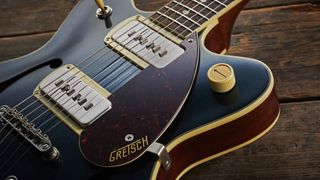
As electric guitars are very subjective instruments, we must put our personal preferences aside in order to test them fully. Any electric guitar we get our hands on, whether it costs $100 or $10,000, must meet a certain set of criteria before we recommend it to you.
When we receive a new electric guitar, the first thing we do is check the build quality of the instrument. We check every area of the guitar, making sure that it feels strong, sturdy and well put together. If the guitar has a bolt-on neck - such as a Stratocaster or Telecaster - we’ll take some time to make sure that this joint is tight and that everything fits as it should.
We also look over the hardware of the guitar - most notably the tuners, electronics and bridge. This is to make sure that the tuners move smoothly, and that they offer a suitable amount of resistance. We’ll check the volume and tone pots to make sure they move as they should, and we’ll check the bridge and saddles to make sure there are no flaws, sharp edges or fitment issues. If the guitar has a tremolo, we’ll check that the action of the tremolo isn’t too soft or too difficult to use, too. At this point, we’ll also look over the finish of the guitar and make sure there are no flaws, and that the finish of the guitar suits the price point of which it sits at.
We’ll then put the guitar through its paces with a playing test. For this test, we’re looking specifically at how the guitar plays straight out of the box - as this is the most common playing experience that someone who buys a guitar online would have. We’re checking to see how comfortable the neck is in our hand, but also how well the neck and frets are finished. We’re looking out for sharp fret ends and any frets that are taller than the others, but also looking for any intonation issues or truss rod issues. Does the guitar need another setup, or is it playing the best it can already?
Finally, we test to see how the guitar sounds. This is, again, pretty subjective, but usually a manufacturer will design a guitar to have a specific sound and purpose. We check to see not only whether the guitar lives up to the manufacturer’s intentions, but also whether it has any other tricks up its sleeve. We’ll always test an instrument to its strengths first of all, but we like to test them in a range of musical scenarios and styles to see what they can do.
Read more about how we test music making gear and services at MusicRadar.
Related buying guides
MusicRadar's got your back
- Check out the best gifts for guitarists
- Protect your axe with the best guitar cases and gig bags
- Explore the best cheap electric guitars
- Bigger budget? These are the best electric guitars under $/£1,000
- Money no object? These are the best high-end electric guitars
